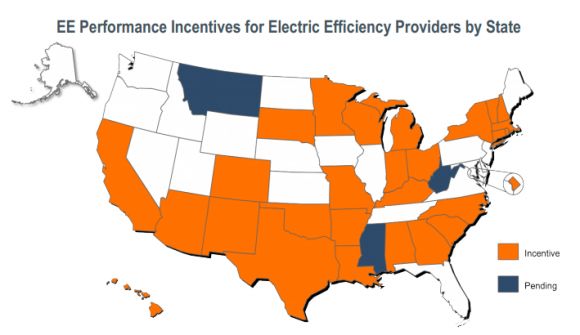Ratepayer-funded utility programs dominate the energy efficiency landscape in the U.S.
From 2006 to 2008, these programs more than doubled from $2 billion to $4.8 billion. And according to the Lawrence Berkeley National Laboratory, these programs are expected to double again by 2025.
In order to encourage utilities to invest in efficiency, various states have measures in place to guarantee power companies don't have a disincentive to encourage less energy use. These typically come in two forms: fixed-cost recovery mechanisms like revenue decoupling, and performance incentives like shared savings that reward utilities that meet their efficiency goals.
In the last year, a number of states have added these regulatory structures, ensuring that a majority now have utility-friendly policies to boost efficiency programs. According to a new report from the Edison Foundation's Institute for Electric Efficiency (IEE), 31 states now have cost recovery tools in place -- thirteen with revenue decoupling and eighteen with lost revenue adjustments. That adds five new states to the list.

In addition, 28 states now have performance incentives, up from twenty-three states last year. That brings Alabama, the District of Columbia, Louisiana, Missouri and South Dakota on board.

Much of U.S. spending on utility programs has been catalyzed by energy-efficiency resource standards, which set targets for efficiency by specific dates. Some of the targets are isolated, and some are part of renewable portfolio standards. But twenty-one states still don't have these explicit mandates, which makes regulatory reform crucial for encouraging efficiency.
States in the Northeast and West have been first-movers on energy efficiency, accounting for 70 percent of spending. However, states in the Midwest and Southeast are starting to catch up. Analysts at Lawrence Berkeley National Lab expect that those regions will make up 50 percent of spending in the next decade and a half.
As the report from IEE shows, the last year has seen a number of Southern states craft regulations promoting efficiency, with Louisiana and Mississippi representing the strongest push in the region.



